The Tiggo 7 PHEV, conversely, gains traction among younger buyers by offering a lower price point and a more technologically advanced package.
【PCauto】Before the Chery Tiggo 7 PHEV entered the market, the choice between HEV and PHEV was straightforward for many, with the Toyota Corolla Cross HEV often being the default option.
But now that the Chery Tiggo 7 PHEV has arrived, it competes directly with the Toyota Corolla Cross HEV in the C-Segment SUV market. More importantly, the price of the Chery Tiggo 7 PHEV is lower than that of the Toyota Corolla HEV.
The starting price of the Tiggo 7 PHEV is 129,800 MYR, which is 4,000 MYR lower than the 133,800 MYR price of the Corolla Cross petrol version. Even the top-spec Tiggo 7 PHEV is priced lower than the Corolla Cross HEV at 148,800 MYR.
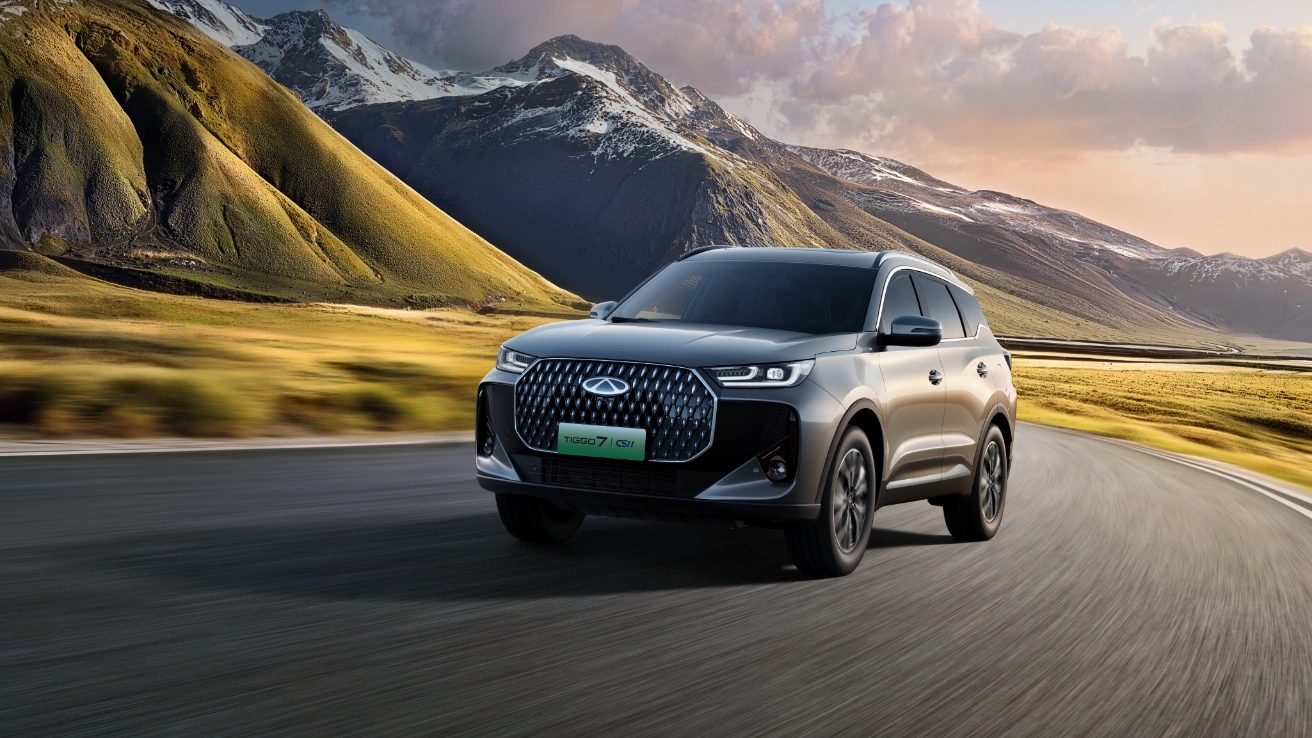
This price difference gives the Tiggo 7 PHEV a natural competitive edge in the entry-level plug-in hybrid SUV market.
However, a low price alone isn’t the sole driving factor behind a purchase decision; the smart choice is what aligns with our personal requirements. So, we will compare the Chery Tiggo 7 PHEV with the Toyota Corolla HEV to understand the differences between HEV and PHEV before making a decision.
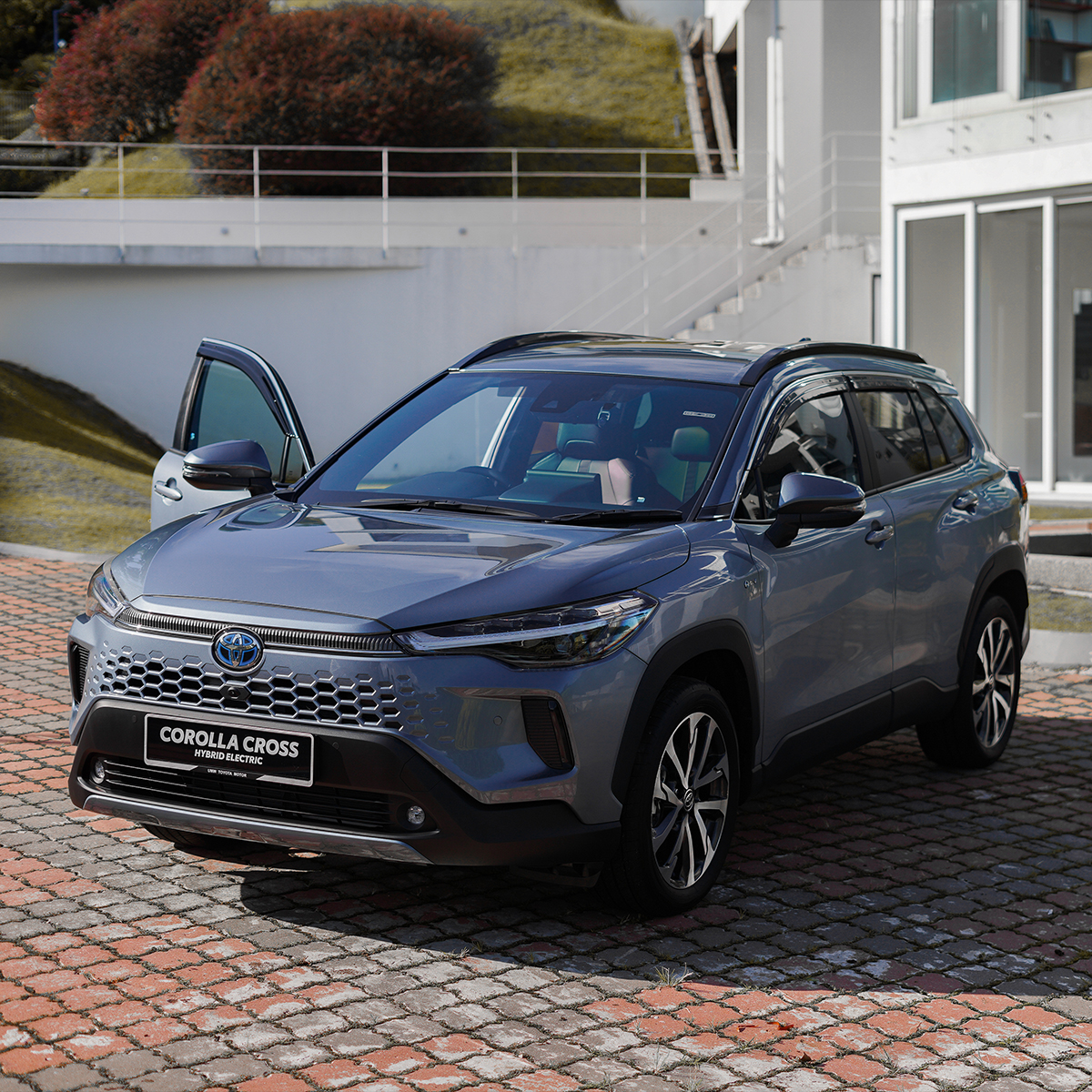
Appearance and Dimensions: Tiggo 7 PHEV Boasts a Longer and Larger Body
The differences in exterior design and dimensions are immediately apparent, influencing both aesthetics and the driving experience.
The dimensions of the Corolla Cross are:
4460mm×1825mm×1620mm, with a wheelbase of 2640mm
The dimensions of the Tiggo 7 PHEV are:
4553mm×1862mm×1696mm, with a wheelbase of 2670mm
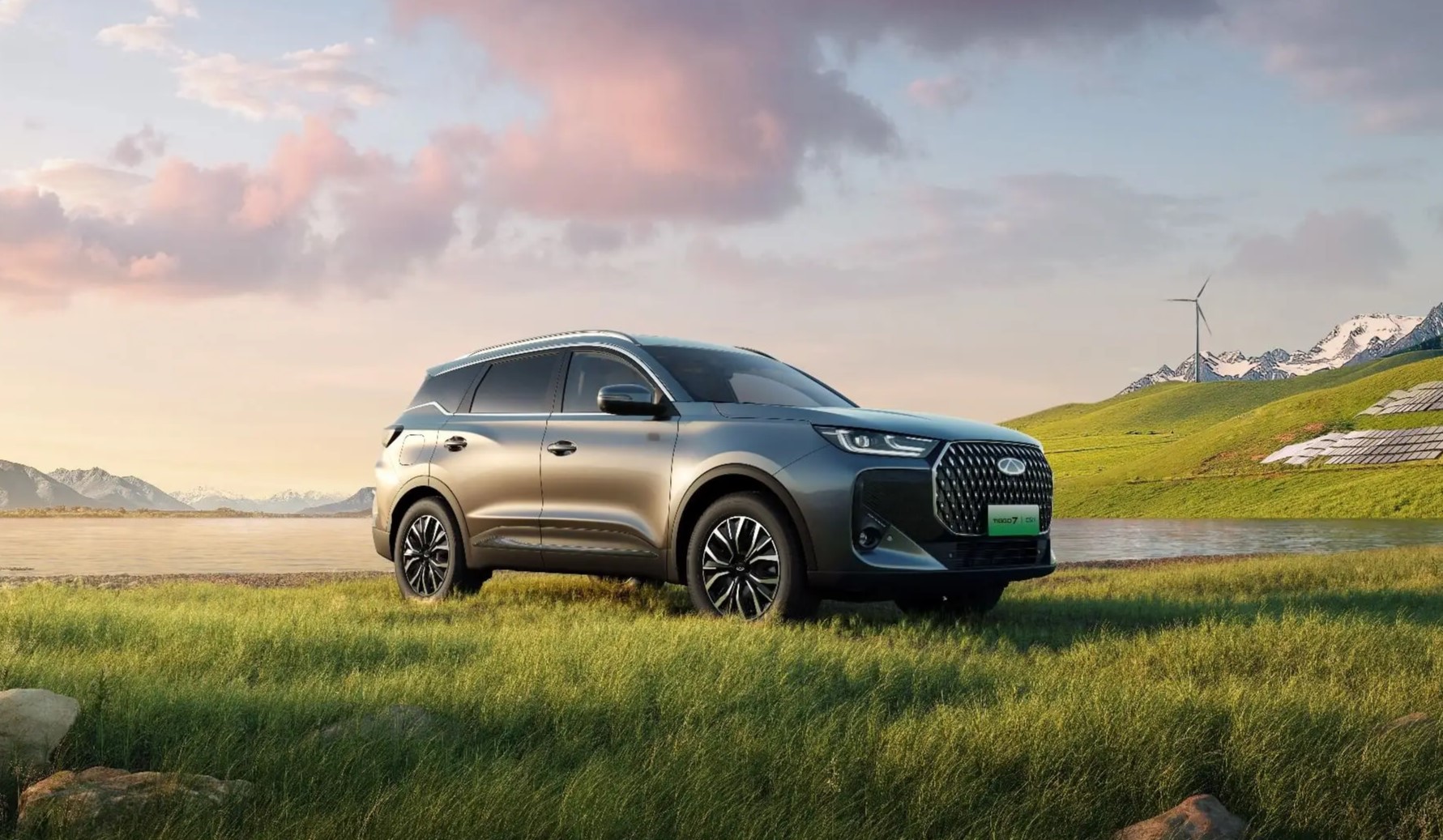
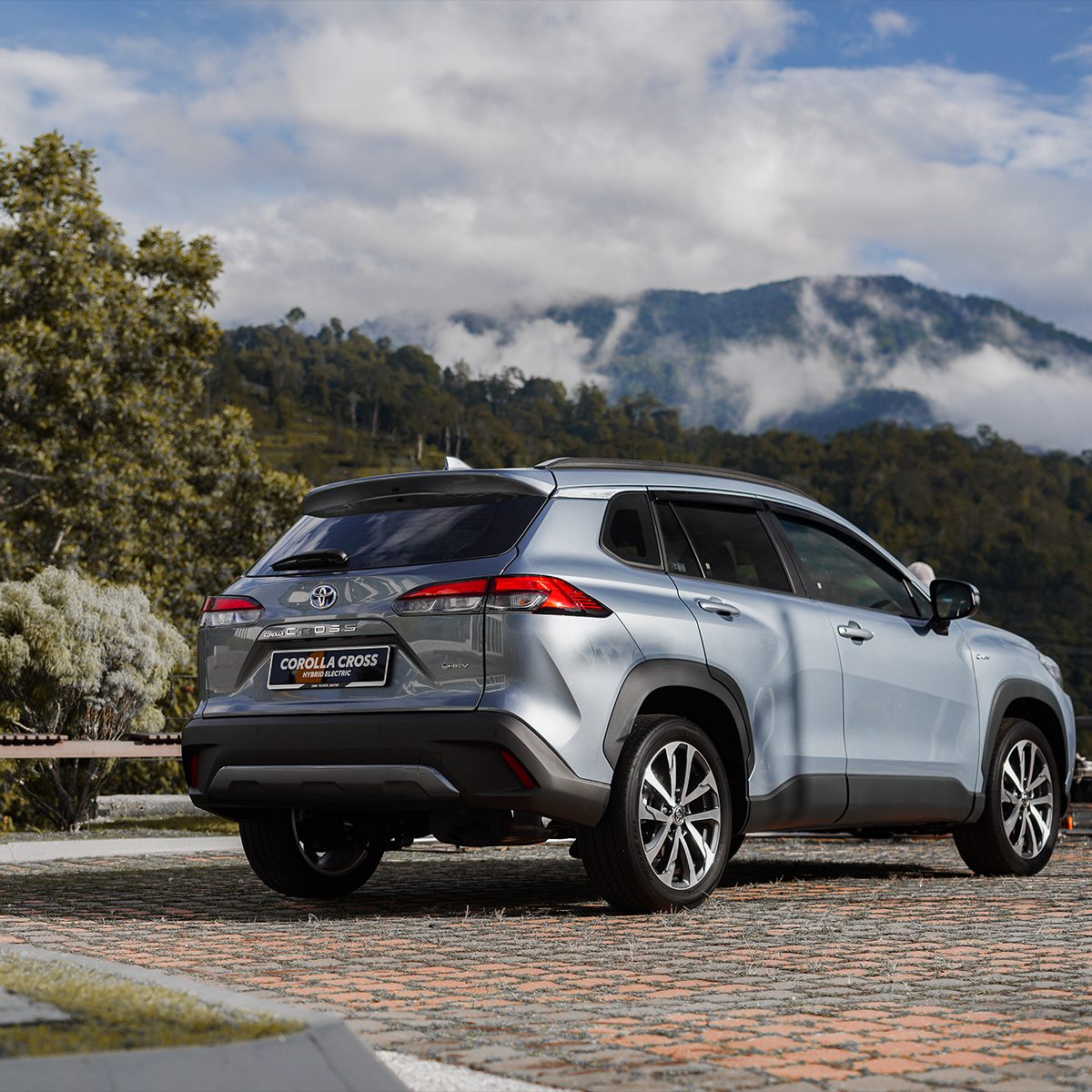
Tiggo 7 PHEV features a longer and wider body, as well as a longer wheelbase. The extended body gives the Tiggo 7 PHEV more streamlined front and rear lines, making it visually sleeker than the Corolla Cross.
The wider track enhances lateral stability, providing a more planted feel and significantly reducing body roll during high-speed driving. The taller roofline offers increased headroom for rear passengers. Combined with the longer wheelbase, the Tiggo 7 PHEV provides approximately a fist’s worth of extra rear legroom compared to the Corolla Cross. This spatial advantage is highly appealing to family users, especially in scenarios that frequently involve transporting children or elderly relatives, as it significantly enhances riding comfort.
Interior Comparison: Tiggo 7 PHEV Offers a More Technological Appeal
As a newly launched model, the Tiggo 7 PHEV’s status as a later entrant allows it to integrate the latest technology, resulting in a markedly more advanced ambiance than the Corolla Cross.
The interior of the Tiggo 7 PHEV features two 12.3-inch screens integrating the digital instrument cluster and infotainment system, supporting wireless Apple CarPlay and Android Auto. It is also equipped with ambient lighting, 50W wireless fast phone charging, a premium SONY audio system, and a panoramic sunroof, making its entertainment and comfort features more appealing to younger demographics.
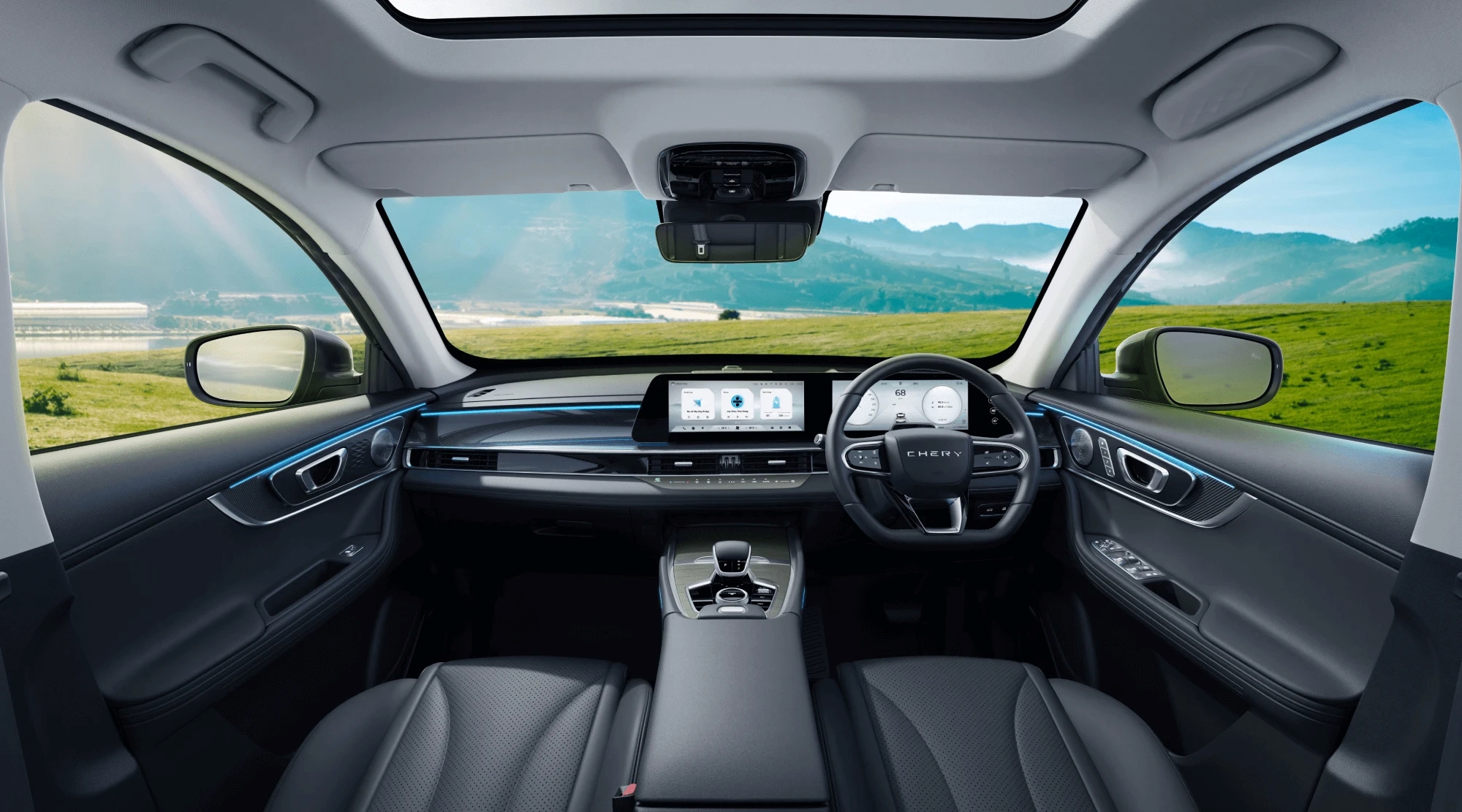
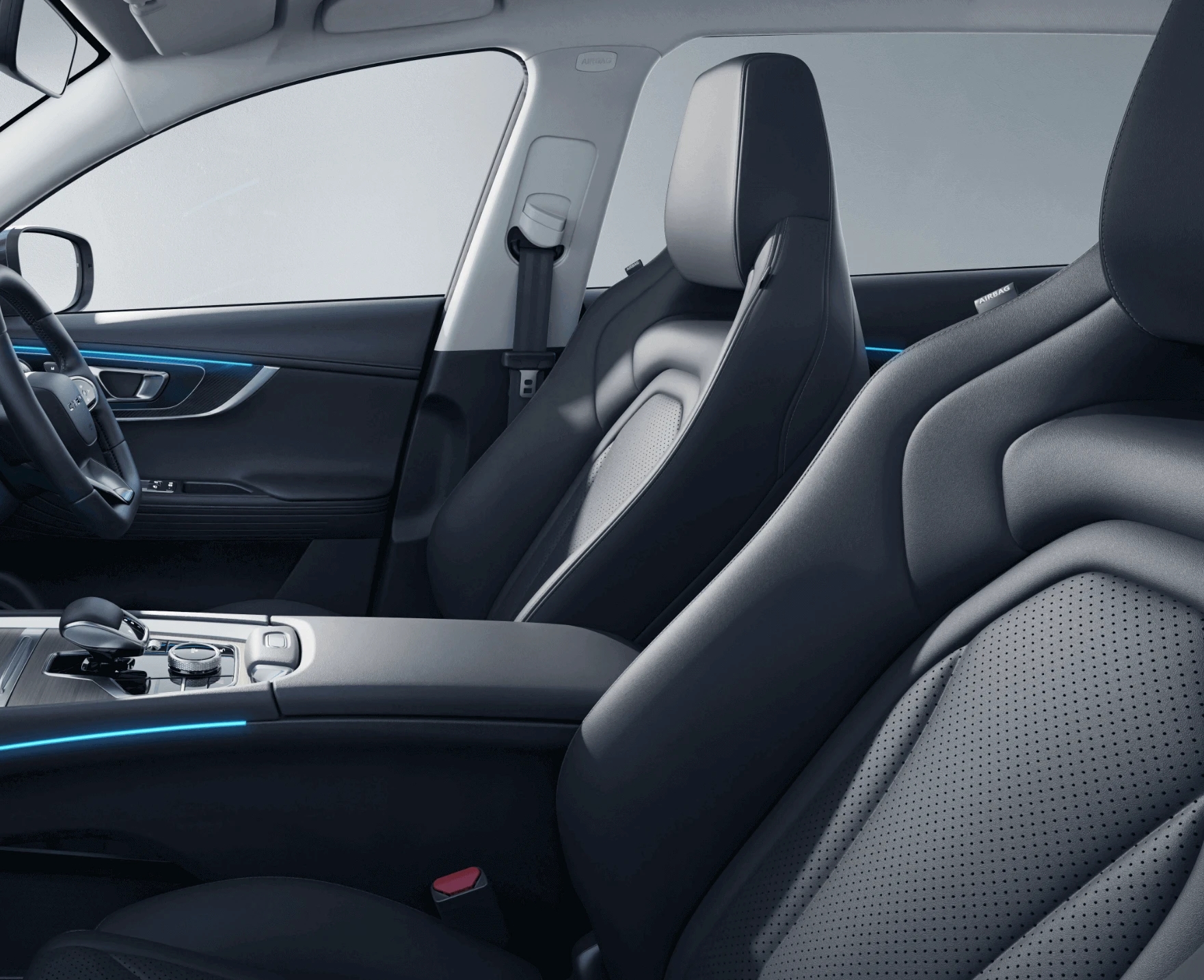
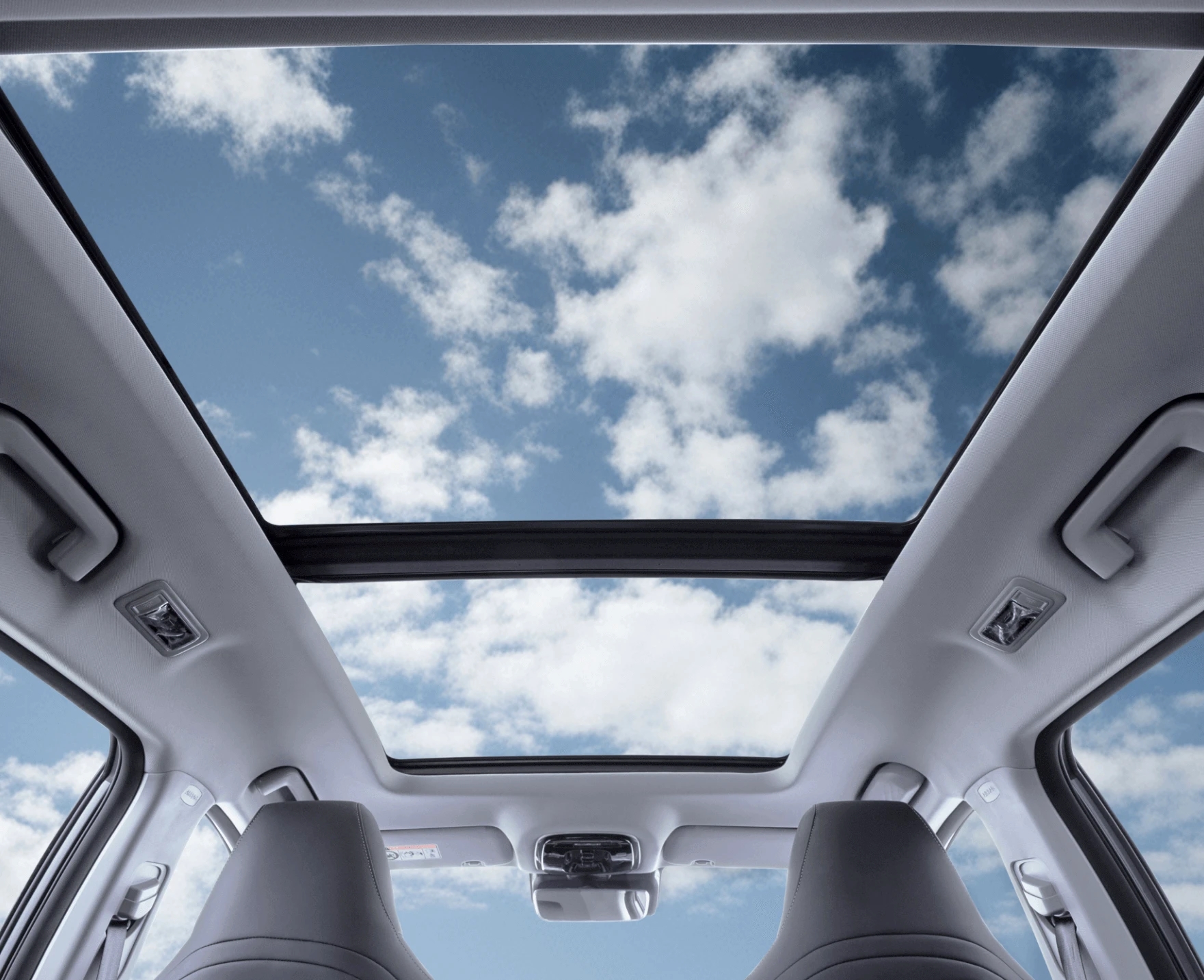
The interior of the Corolla Cross HEV maintains Toyota’s traditional style, offering a 10.1-inch touchscreen, equipped with a multifunctional steering wheel, automatic air conditioning, rear air vents, and foldable exterior rearview mirrors. The driver’s seat in the front row is an 8-way power adjustable seat, the passenger seat is manually adjustable, and the rear seats support a 60:40 split-folding configuration.
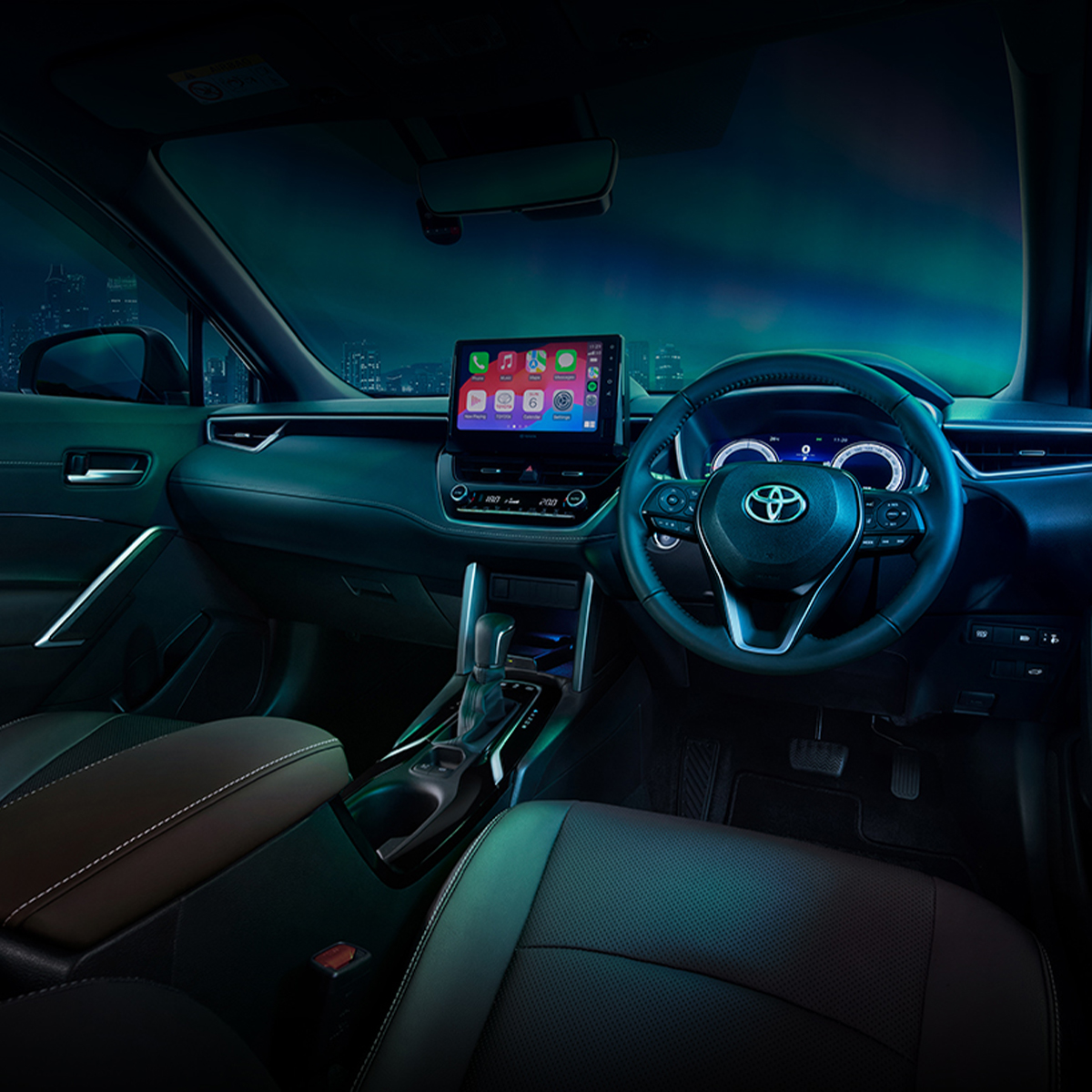
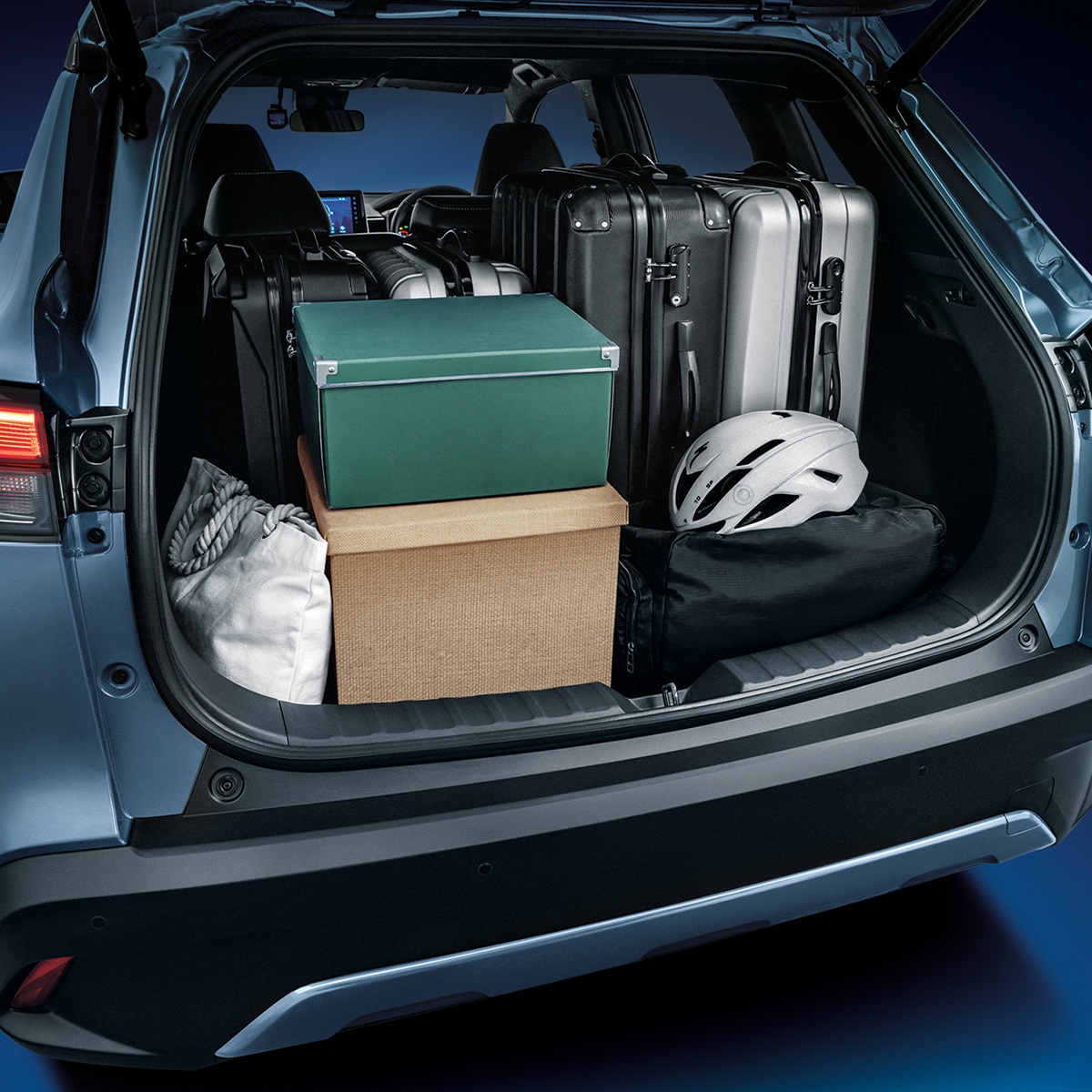
Inside, the Tiggo 7 PHEV carries forward the design ethos characteristic of Chinese-branded vehicles. Its differences from the Corolla Cross HEV are evident not just visually, but also in their impact on daily usability. The Tiggo’s large screen provides clearer navigation and entertainment content, and wireless charging eliminates the hassle of plugging and unplugging cables, which better aligning with the usage preferences of younger demographics.
Safety Configuration Comparison between Tiggo 7 PHEV and Corolla Cross
In terms of safety performance, Toyota Corolla Cross comes standard with 7 airbags (including front airbags for the driver and passenger, front side airbags, front and rear side curtain airbags, and a driver knee airbag), ISOFIX anchors, and a TSS system (including PCS Pre-Collision System, LDA Lane Departure Alert, DRCC Dynamic Radar Cruise Control, and AHB Automatic High Beam).
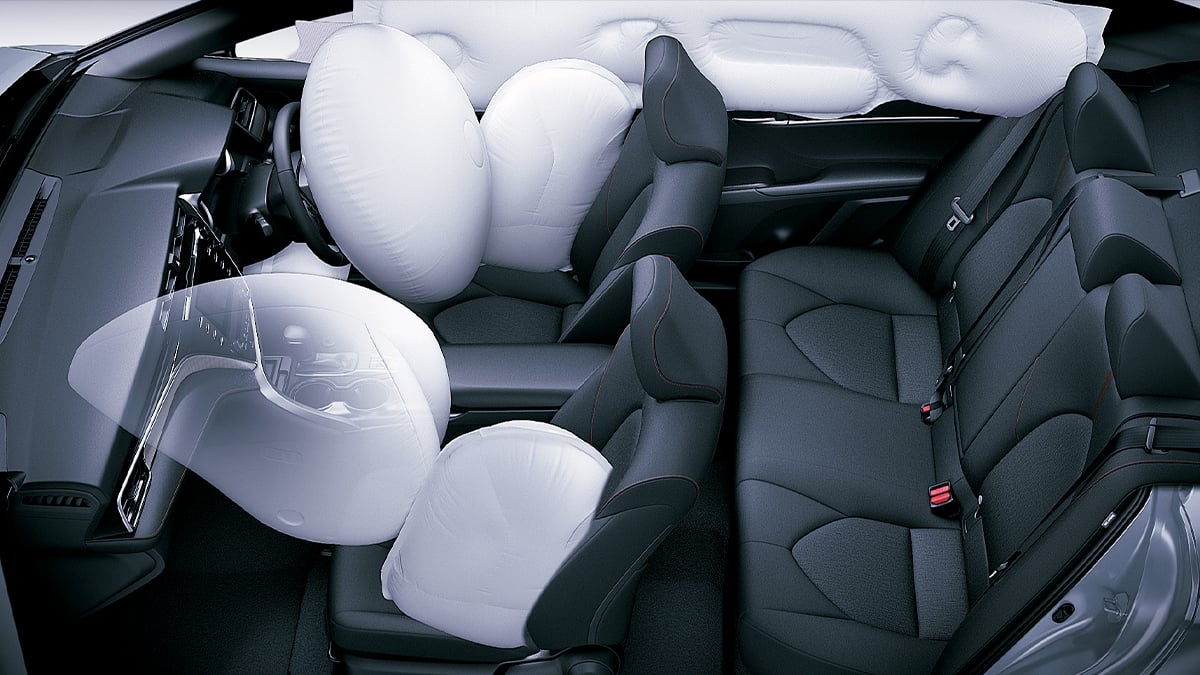
The Chery Tiggo 7 PHEV is equipped with a comprehensive ADAS suite, including Adaptive Cruise Control (ACC), Lane Departure Warning (LDW) & Lane Keeping Assist (LKA), Blind Spot Detection (BSD), Rear Cross Traffic Alert (RCTA) & Braking (RCTB), Forward Collision Warning (FCW) & Rear Collision Warning (RCW), and Autonomous Emergency Braking (AEB). Additionally, it features tire pressure monitoring, front dual airbags, and front side airbags, offering more comprehensive coverage in terms of active safety features.
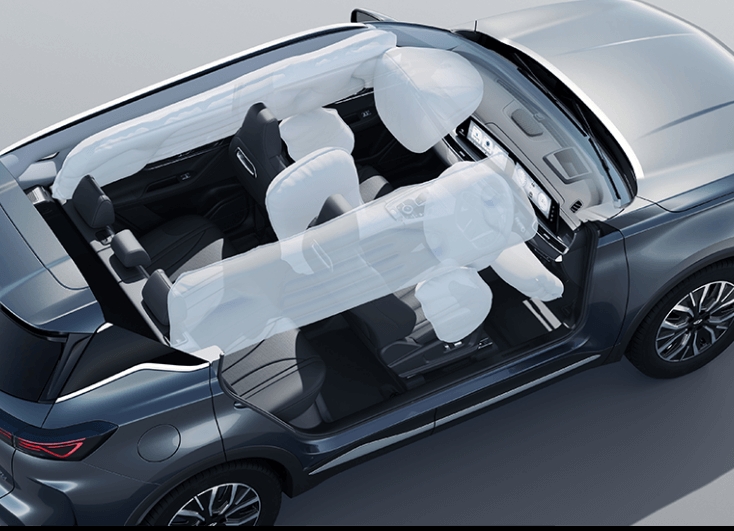
HEV or PHEV?
Now, we come to today’s highlight: the differences in the power systems of the Chery Tiggo 7 PHEV and Toyota Corolla Cross HEV.
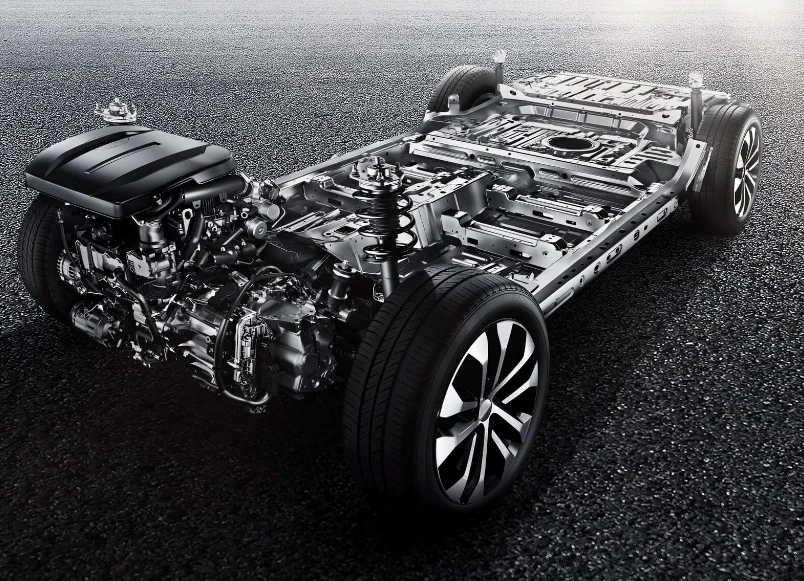
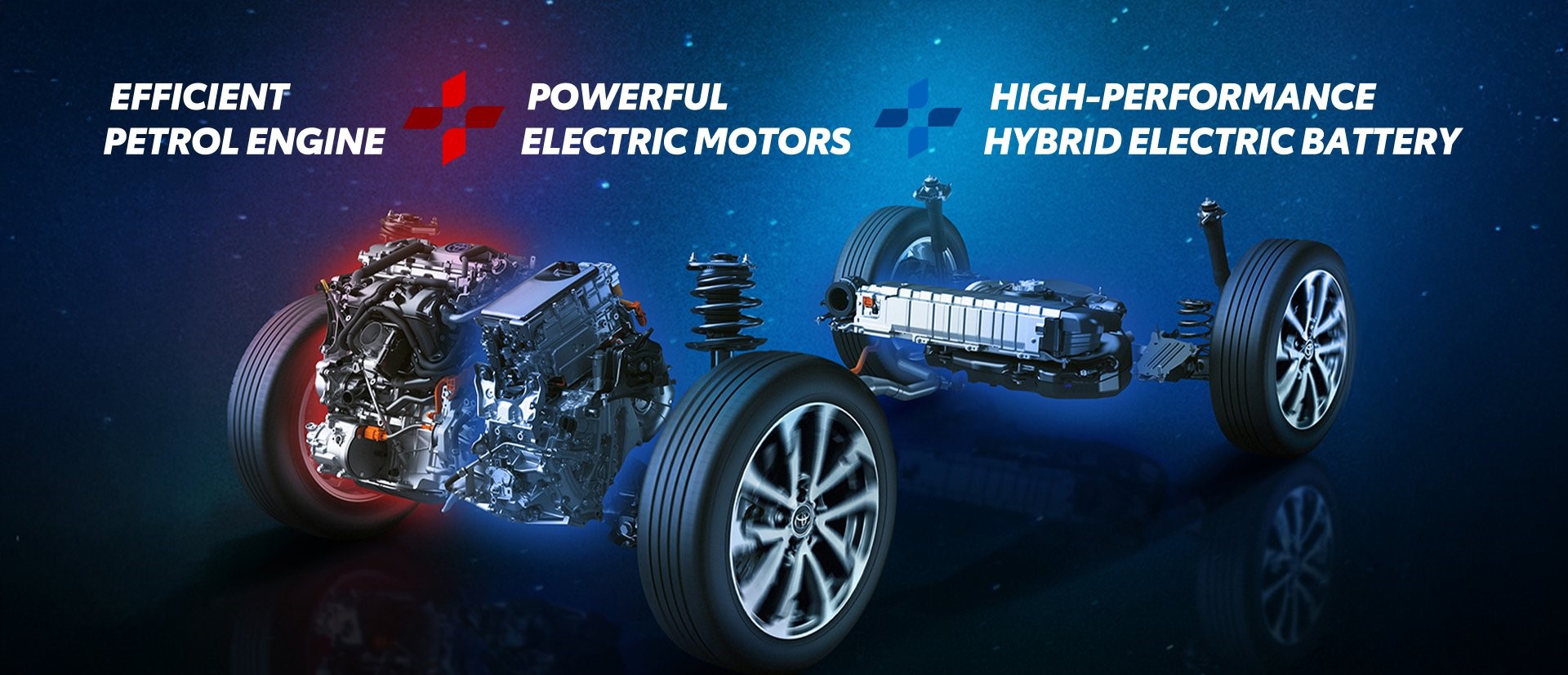
The Toyota Corolla Cross HEV is equipped with a 1.8L naturally aspirated engine paired with a permanent magnet synchronous motor. The engine delivers 98PS (72kW) of power and 142Nm of torque, while the motor provides 72PS (53kW) of power and 163Nm of torque. It features a 6.5kWh nickel-metal hydride battery and a 1-speed E-CVT transmission.
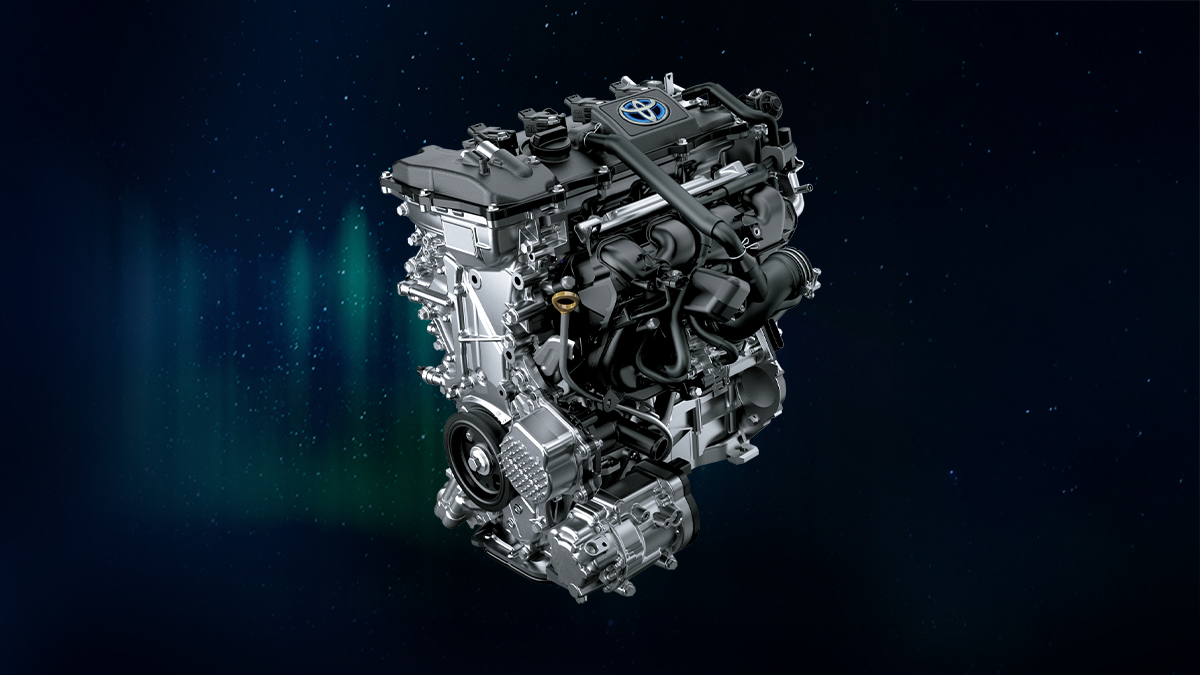
The Chery Tiggo 7 PHEV, meanwhile, is built on Chery’s Super Hybrid (CHS) technology, featuring a 1.5L turbocharged engine and an electric motor that are integrated through a Dedicated Hybrid Transmission (DHT). The engine alone produces 143PS (105kW) and 215Nm of torque, while the motor delivers 204PS (150kW) and 310Nm of torque. Together, the system achieves a combined output of 279PS (205kW) and 365Nm of torque, paired with a 3-speed DHT gearbox.
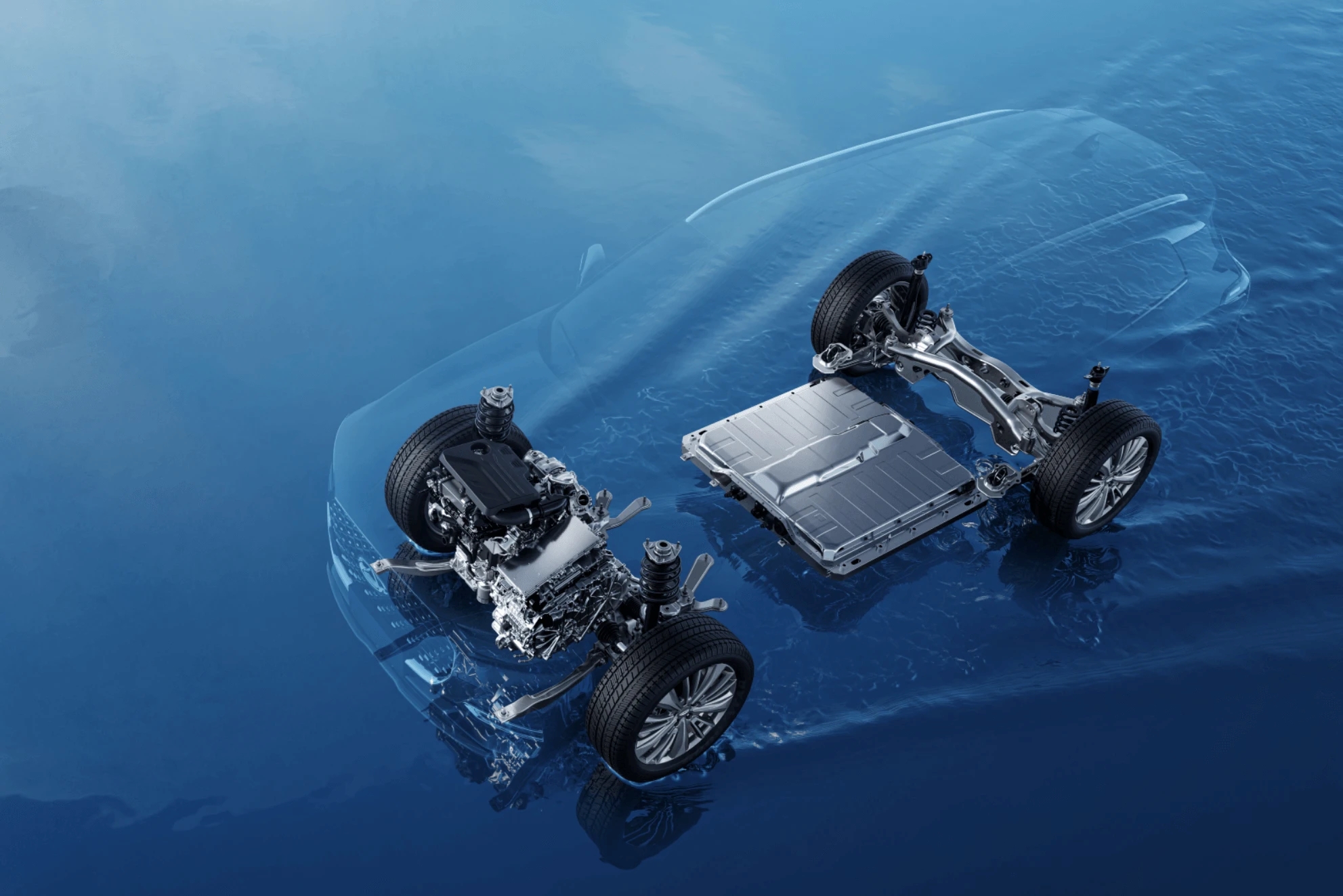
The Chery Tiggo 7 PHEV is powered by an 18.3kWh ternary lithium battery pack, supporting a pure electric range of 90 kilometers and a combined range of up to 1,200 kilometers. In terms of charging, it supports 40kW DC fast charging (30% to 80% charge in 19 minutes) and 6.6kW AC charging (about 3 hours for the same range), and it is equipped with V2L reverse power supply functionality with a maximum output power of 3.3kW.
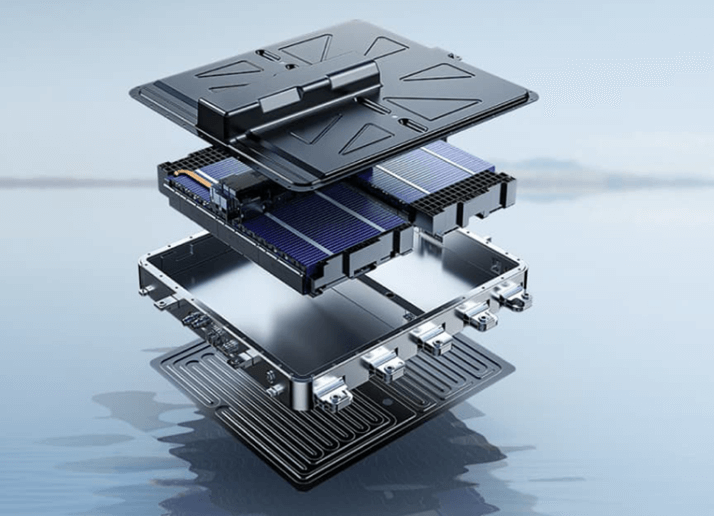
The Toyota Corolla Cross Hybrid’s nickel-metal hydride battery is designed for seamless petrol-electric synergy, with a fuel tank capacity of 36 liters for the hybrid version, emphasizing fuel economy for daily commutes.
In contrast, the Chery Tiggo 7 PHEV’s 18.3kWh large-capacity battery supports longer pure electric driving, making it suitable for users who have access to charging facilities. Its combined range of 1,200 kilometers and fast charging capabilities offer more flexibility for long-distance travel.
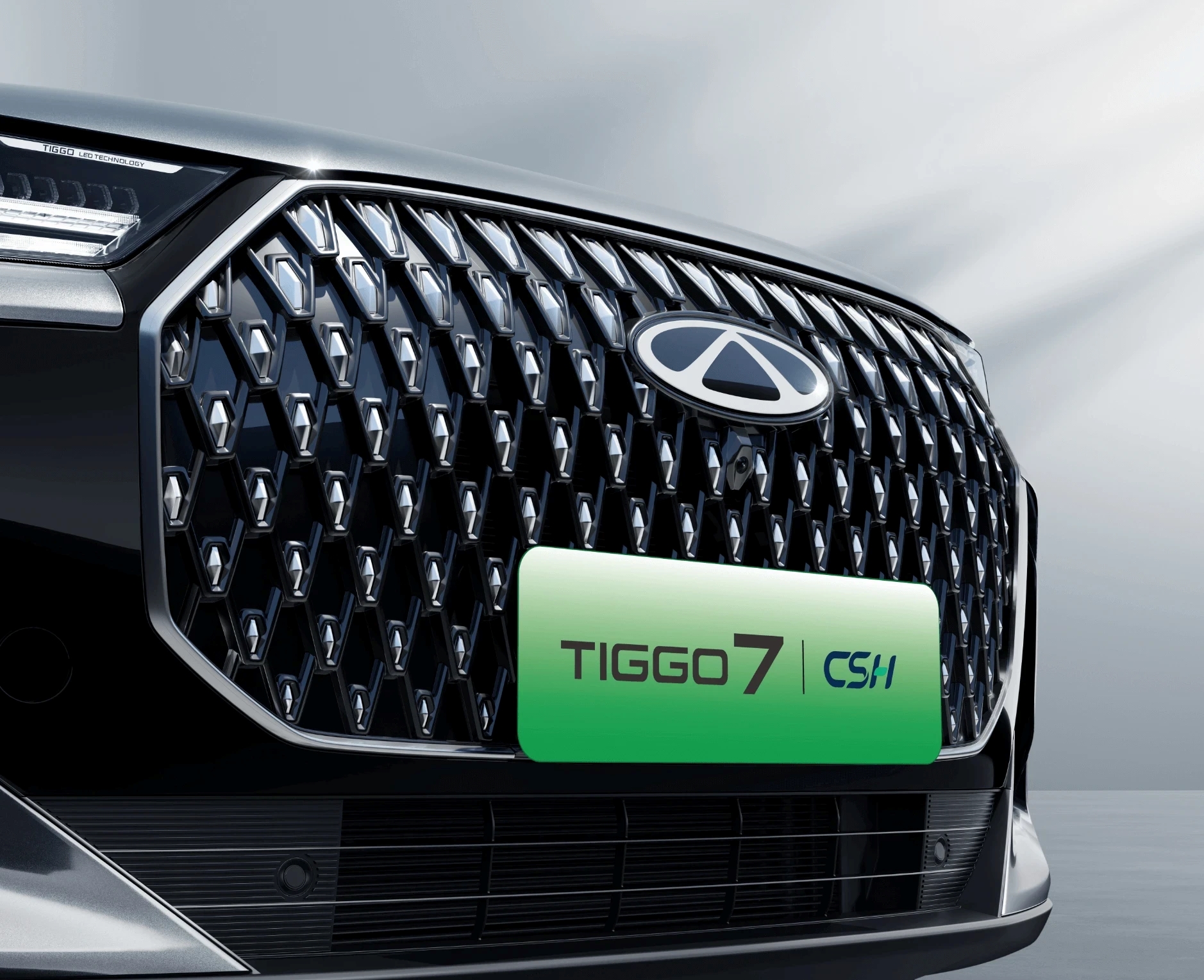
It seems that PHEVs have more advantages compared to HEVs, right? Drivers can enjoy quiet, fuel-free electric driving for daily commutes and short trips under several dozen kilometers, all while benefiting from stronger acceleration. Additionally, the vehicle serves as a mobile power source with 3.3 kW of external output.

Compared to HEVs, PHEVs are not without disadvantages
The complexity of PHEV systems places higher demands on reliability, as the coordination between the motor, battery, and electronic control units requires long-term validation.
Additionally, maintenance costs are higher. Services specific to the PHEV’s electric motor, battery inspections, and related components will lead to increased annual running costs. However, Chery offers an 8-year/150,000-km battery warranty, which guarantees repair or replacement if the capacity degrades below 70%.
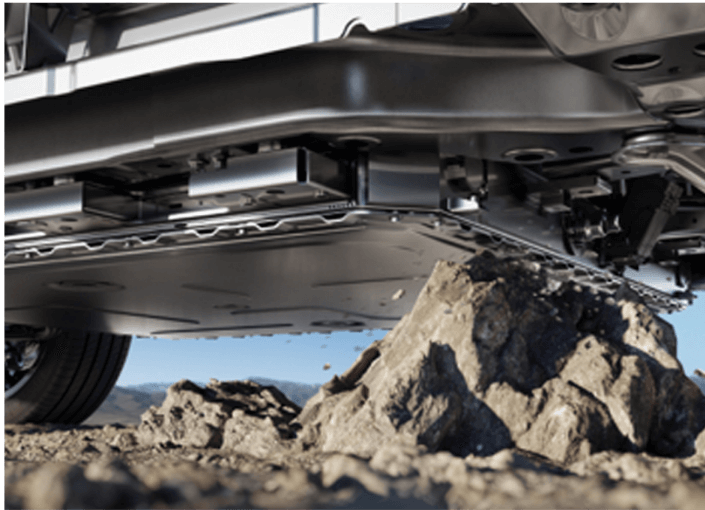
The Corolla Cross HEV’s power system is based on Toyota’s iterative THS hybrid technology, with over 20 million units sold globally. The reliability of its core components (engine, motor, and nickel-metal hydride battery) has been thoroughly validated by the market.
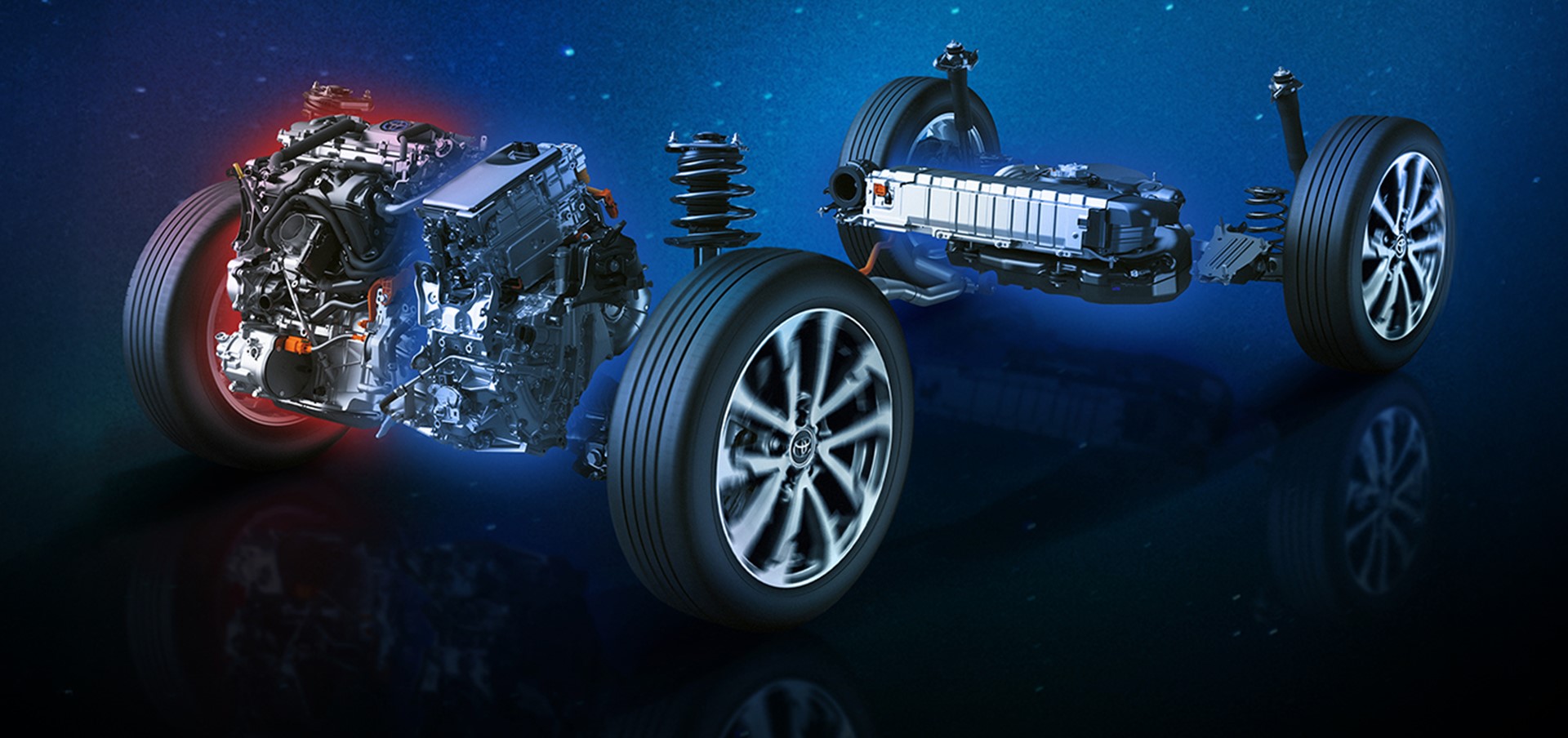
The lifespan of NiMH batteries is typically aligned with the vehicle’s life cycle (often exceeding 10 years without significant degradation), making the cost of replacement low. Its maintenance routine is similar to that of a conventional fuel-powered vehicle, requiring only regular oil and filter changes with no additional battery upkeep, making it ideal for users who seek hassle-free ownership.
Choose Corolla Cross HEV or Tiggo 7 PHEV?
For users in the C-Segment SUV market, the competition between the Corolla Cross HEV and Tiggo 7 PHEV is not about one replacing the other, but rather each serving defined markets with specific needs.
The Corolla Cross draws in a loyal customer base with Toyota’s proven reputation for reliability and balanced performance, appealing to those who value peace of mind.
The Tiggo 7 PHEV, conversely, gains traction among younger buyers by offering a lower price point and a more technologically advanced package.
If any infringement occurs, please contact us for deletionFollow Us
Leapmotor new car: Spend the money for a RAV 4 to get a car as big as a Land Cruiser
WilliamOct 11, 2025, 05:39 PM
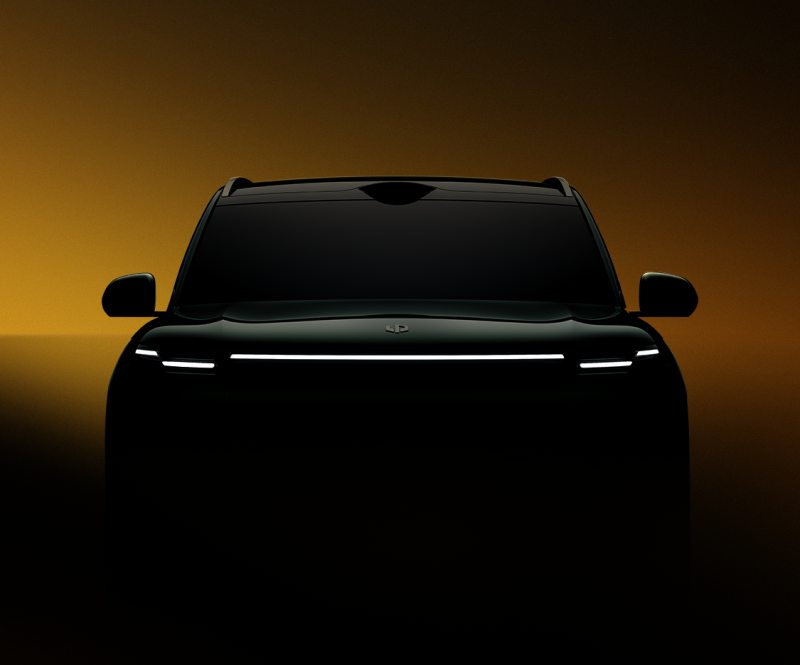
[PCauto] For the consumer in search of a full-size SUV that meets every need of family life yet is unwilling to cover steep brand premiums, the soon-to-arrive Leapmotor D19 may be an option worth considering. This all-electric flagship brings the dimensions and spaciousness of a Toyota Land Cruiser within the budget of a Toyota RAV4.
D19 is Leapmotor’s First Full-Size Flagship
The D19 is the first flagship model built on Leapmotor’s D platform. From its inception, it has targeted models like Li Auto L9 and AITO M9 in the Chinese market. Leapmotor continues its low-price strategy, offering this model at justhalf the price of these competitors—equivalent to the cost of a RAV4.
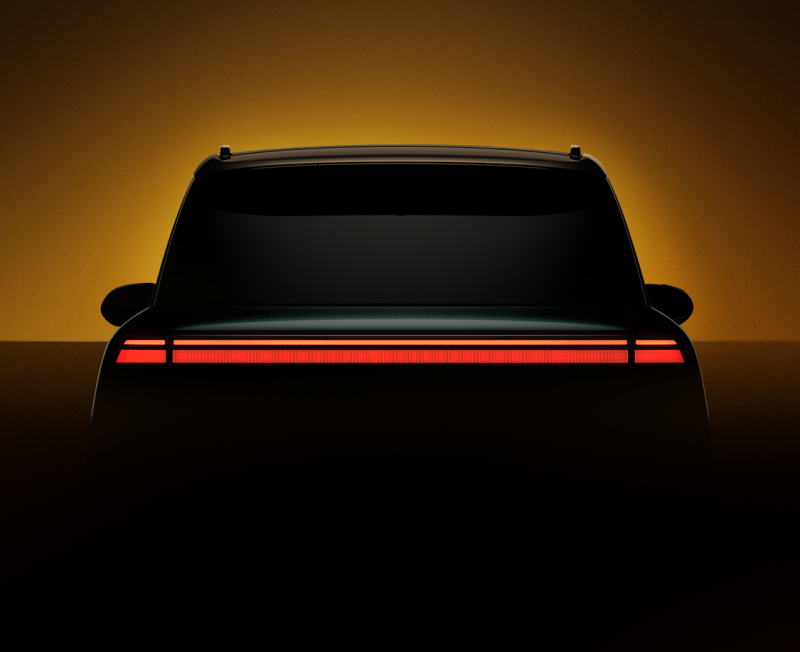
The new model is scheduled for a global debut on October 16, 2025, and mass production with deliveries is planned for the first quarter of 2026. By then,it will mount a formal challenge to the “price barrier” in the premium new energy SUV market.
As a Chinese brand partially owned by Stellantis Group, Leapmotor’s confidence stems from its rapidly growing sales. From January to August this year, Leapmotor sold a total of 328,900 vehicles, a year-on-year increase of 136.43%, with an annual sales target set at 500,000 to 600,000 units.
This economy of scale allows it to leverage full-domain in-house R&D to reduce costs, thereby keeping the price of its flagship models within an “affordable range for family users.”
Although highly cost-effective, the Leapmotor D19 still offers sufficient luxurious design
Building upon Leapmotor’s established design lineage, the D19 introduces more pronounced luxury elements. The front end boasts a sealed grille, a penetrating LED light signature, and a split-headlamp setup that together create a unique and recognizable identity.
A LiDAR unit perched on the roof announces its high-level intelligent driving credentials, complemented by flush door handles and 21-inch rims (drawing inspiration from Maybach) that enhance its sophisticated command presence.
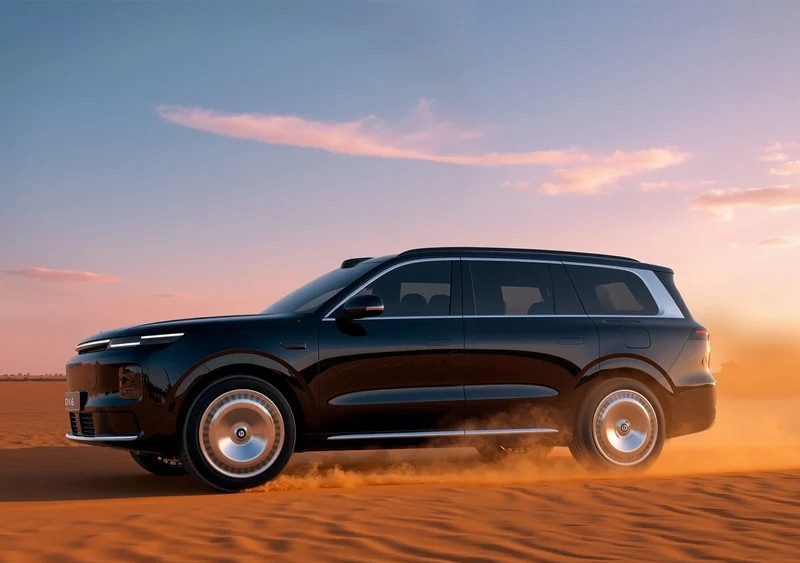
The through-type taillights further widen the visual stance, and the overall design retains the futuristic feel of an electric vehicle while integrating the steady presence of a traditional luxury SUV.
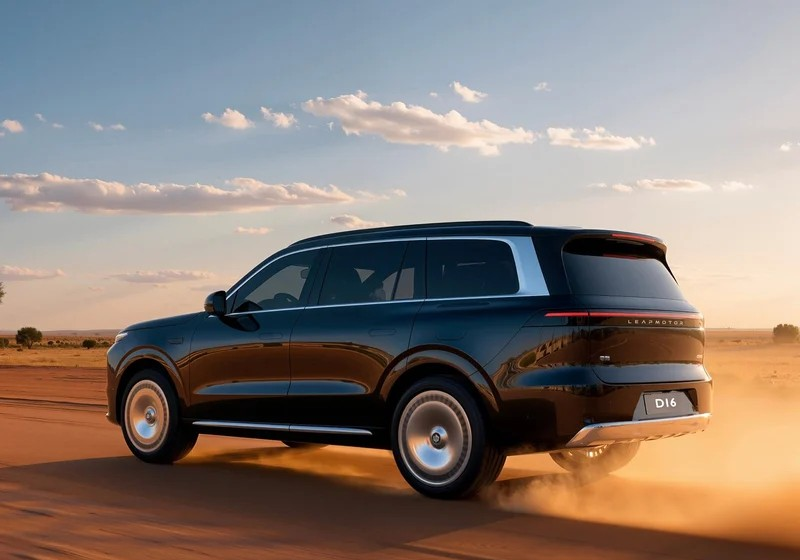
The truly impressive aspect is the D19’s dimensions: a length exceeding 5.2 meters and a wheelbase reaching 3.1 meters, surpassing the Toyota Land Cruiser (length 5170mm, wheelbase 2850mm). While the two vehicles serve different purposes, this comparison underscores the compelling value proposition of the Leapmotor D19.
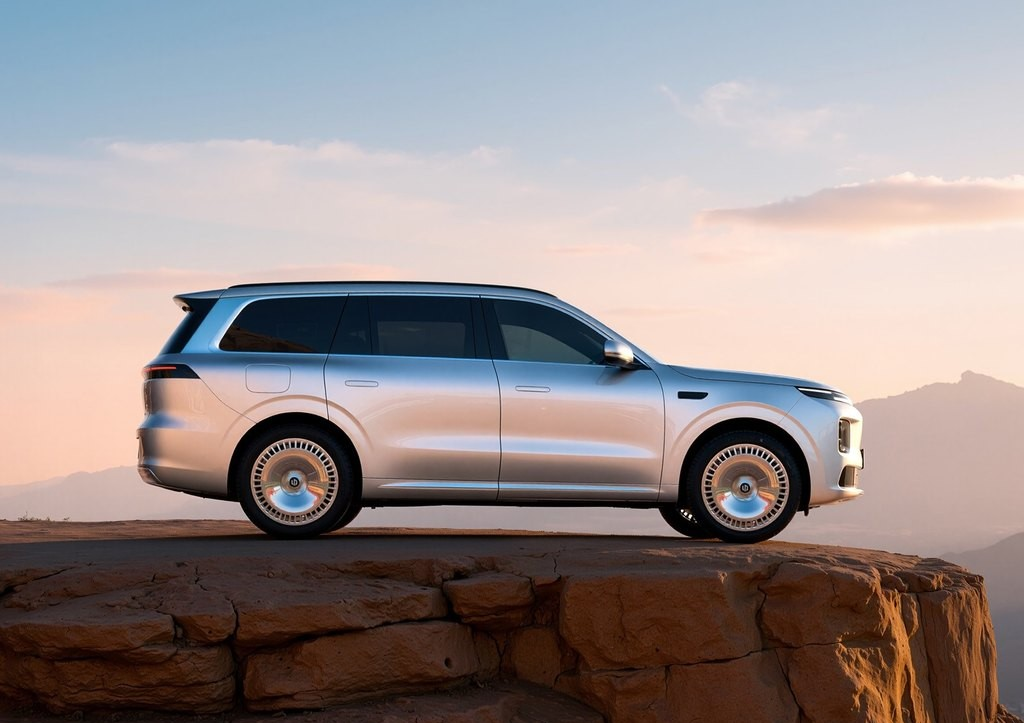
In terms of space performance, the D19 offers 6-seat (2+2+2) or 7-seat (2+3+2) layouts. For a passenger with a height of 1.8m, the third row still provides approximately three fingers’ worth of headroom, far exceeding the third row of the Land Cruiser.
The trunk has a standard capacity of 840L, which can be expanded to 2100L by folding down the third row, enough to hold all the luggage for a family trip.
According to Leapmotor’s designers: “The space in the D19 is designed for families—the third row is not exclusive to children but can accommodate adults up to 1.8m tall; the trunk is not just for two suitcases but can also fit a stroller, camping gear, or even a small bicycle.”
The D19 will offer both EREV and BEV options
The range-extended version of the D19 is equipped with a 1.5T four-cylinder engine with a thermal efficiency of 40%, offering a CLTC pure electric range of 200 kilometers and a total range exceeding 1300 kilometers, supporting either rear-wheel drive or all-wheel drive.
The pure electric version adopts an 800V high-voltage platform, enabling 480kW ultra-fast charging—a rate that adds 300 kilometers of range in 10 minutes, significantly outpacing conventional charging speeds.It offers a CLTC range of 630 kilometers and adopts CTC 2.0 battery integration technology, which directly integrates the battery into the chassis frame, improving space utilization and enhancing body rigidity.

In terms of chassis tuning, the D19 uses a front double-wishbone and rear multi-link suspension system. The pure electric version comes standard with air suspension and CDC damping adjustment, which can automatically adjust the suspension stiffness based on road conditions—soft when passing speed bumps, and providing strong support during high-speed cornering. With a minimum turning radius of 5.8 meters, even with its full-size body, it can make agile U-turns in narrow residential areas.
Smart technology is another core competitive advantage of the D19
Inside the cabin, a 15.4-inch floating central control screen and a 10.25-inch co-pilot screen come as standard. The rear row has reserved interfaces for six-way electrically adjustable heated seats and a retractable entertainment screen. Combined with a 16-speaker Dolby Atmos surround sound system, even long journeys allow rear passengers to enjoy a cinematic experience.
It is equipped with Qualcomm dual 8797 chips (QAM8797P), with the two chips separately responsible for the intelligent cockpit and driving assistance system. The total computing power reaches 640 TOPS, supporting deep integration between the cockpit and smart driving. For example, it can automatically adjust the air conditioner temperature while navigating or remind the front passenger to switch music when detecting driver fatigue.
As for smart driving hardware, the D19 features a combination of LiDAR, 5 millimeter-wave radars, and 12 ultrasonic sensors. The system achieves L3-level autonomy under specific conditions, enabling functions like automated lane changes and intersection navigation, though these capabilities are pending regulatory approval in target markets.

Offers a Land Cruiser-sized body at the price of a RAV4
The D19’s pricing strategy essentially redefines luxury based on the needs of family users. By prioritizing practicality over superficial luxury, the D19 delivers class-leading cabin space (e.g., 3.1m wheelbase vs. 2.85m for the Land Cruiser) and extended range (up to 1,300km total), while integrating advanced cabin intelligence.
Priced between $35,000 and $42,000 globally, the D19 undercuts premium rivals like the Li Auto L9 while offering higher-value features than the Toyota RAV4 Hybrid ($30,000), including 800V fast charging and air suspension.
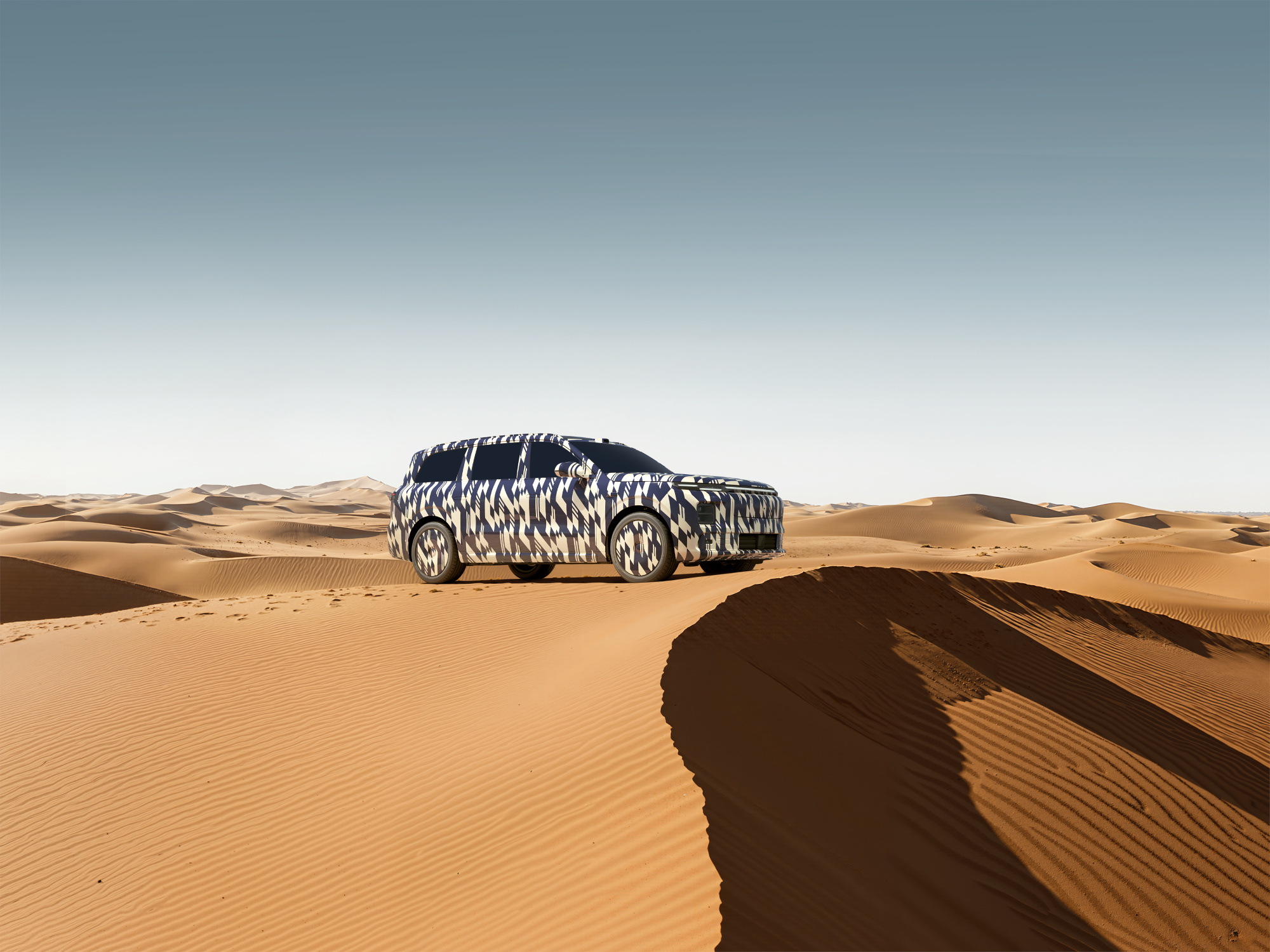
Leapmotor D19 will be launched globally on October 16
Currently, the interior details of the D19 (such as material selection and seat comfort) and final pricing still need to wait for the announcement at the October 16 launch event.
From the information that has been revealed so far, it already has the strength to challenge the high-end SUV market. With its full-size space, advanced intelligent driving, friendly pricing, and Leapmotor’s fully in-house developed technology, the D19 might truly become the option that lets you ‘spend RAV4 money to get a Land Cruiser.’
If any infringement occurs, please contact us for deletion



